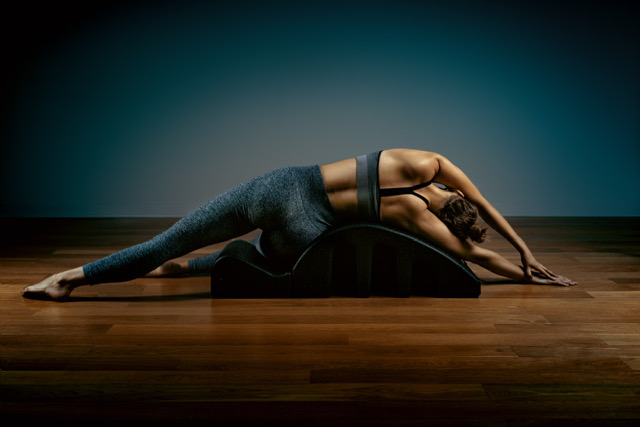Pilates, a form of exercise that emphasizes controlled movements and mindful breathing, has steadily risen in popularity as a core component of modern fitness regimes. Developed in the early 20th century by Joseph Pilates, the practice was initially crafted to rehabilitate injured dancers and soldiers. Today, it has evolved into a comprehensive fitness system that is celebrated worldwide for its physical and mental health benefits. Unlike high-impact workouts, Pilates focuses on precision and alignment, targeting the deeper muscles of the body to strengthen and stabilize the core. This introductory approach not only enhances physical fitness but also promotes a balanced and mindful lifestyle, making it suitable for individuals of all ages and fitness levels. As we explore the extensive benefits of Pilates, we’ll discover how this disciplined practice can significantly enhance overall health and wellness, contributing to a more vibrant and energetic life.
Core Strength and Stability:
At the heart of Pilates is its unwavering focus on core strength, often called the “powerhouse” of your body. This central area encompasses the abdominals, lower back, hips, and glutes, which are crucial for maintaining proper posture and overall fitness. Pilates exercises are designed to deeply engage these core muscles through precise, flowing movements, enhancing stability and balance.
Strengthening the core is essential because it serves as the foundation for all other movements. A strong core improves your ability to perform daily activities with ease and increases your efficiency in various sports and exercises. By stabilizing the spine and pelvis, Pilates helps you maintain optimal functionality and mobility throughout life, reducing the risk of injuries.

Improved Flexibility and Mobility:
Pilates is renowned for its ability to increase flexibility and enhance joint mobility. Through a series of controlled, stretching movements, Pilates gently extends the muscles, helping to prevent injuries and muscle strains. This gradual stretching does not only alleviate tightness but also enhances the overall range of motion in the joints. This is particularly beneficial as it aids in performing daily activities with greater ease and less discomfort.
The unique approach of Pilates involves both dynamic and static stretches that are integrated into each exercise routine. This method ensures that muscles are safely elongated and strengthened simultaneously. Over time, participants notice a significant improvement in their flexibility, which contributes to a more fluid and efficient movement pattern. This is especially important for maintaining muscle elasticity and joint health as we age.
Better Posture and Alignment:
Pilates is instrumental in developing better posture and alignment, key components of physical health that influence overall well-being. The practice is built around the principles of alignment, which teaches participants to carry their bodies in a way that aligns the spine with the natural curvature, supporting the neck and back and distributing weight evenly across the body.
The exercises in Pilates focus on the alignment of the spine and strengthening the muscles that maintain this alignment. These muscles include the back, abdominals, and pelvic muscles. By strengthening these areas, Pilates not only helps improve posture but also aids in preventing the back pain and discomfort that often accompany poor posture.
Enhanced Mental Health Benefits:
Pilates is not just a physical exercise; it has profound effects on mental health as well. The practice incorporates principles of mindfulness, which help in reducing stress and improving mental clarity. Each session of Pilates requires concentration and focus as you coordinate your breathing with fluid movements, fostering a meditative state that can lead to increased mental relaxation and decreased anxiety.
The breathing techniques used in Pilates, such as deep abdominal breathing, are particularly effective in activating the body’s relaxation response. This type of breathing helps to calm the nervous system and reduce the physiological effects of stress, providing a natural antidote to the body’s fight-or-flight response. Regular Pilates practice can thus help manage stress more effectively, promoting a sense of calm and well-being that extends beyond the workout session.

Increased Energy and Endurance:
One of the more surprising benefits of Pilates is the significant boost it can provide to your energy levels and overall endurance. Unlike high-intensity workouts that may leave you feeling depleted, Pilates invigorates the body and mind in a way that increases vitality without overexertion. This gentle yet effective form of exercise stimulates circulation, enhances breathing efficiency, and improves the health of tissues and organs, all of which contribute to higher energy levels.
The methodical, low-impact movements in Pilates help build a stronger body that can endure more without feeling fatigued. This is particularly beneficial for those who lead busy lives or have demanding jobs, as increased endurance allows for better performance both physically and mentally. Additionally, the improved sleep patterns often experienced by regular Pilates practitioners further contribute to increased energy during the day.
Weight Management and Metabolism:
Pilates can be a pivotal component in a weight management strategy, helping to sculpt the body while improving metabolic rates. Although Pilates is not typically recognized for its calorie-burning potential like aerobic exercises, it effectively increases muscle mass. Greater muscle mass boosts metabolism, which helps the body burn calories more efficiently even when at rest.
The strength-building aspects of Pilates involve deep muscle activation, particularly the core, lower back, and hips. This kind of muscle engagement not only tones and firms the body but also enhances your basal metabolic rate (BMR), the rate at which you burn calories while inactive. By incorporating Pilates into your routine, you effectively turn your body into a more efficient energy-burning machine throughout the day and night.
Injury Prevention and Rehabilitation:
Pilates is widely recognized for its role in injury prevention and rehabilitation, making it a favored choice among athletes and individuals recovering from physical injuries. The focus on core strength, flexibility, and correct alignment inherent in Pilates exercises helps to safeguard the body against common injuries by improving overall stability and body mechanics.
The gentle, low-impact nature of Pilates makes it an ideal exercise regimen during the rehabilitation process. It offers a controlled environment where one can safely rebuild strength, flexibility, and muscle endurance without placing undue stress on the body. This is particularly important for recovery, as it ensures that movements are executed with proper form, minimizing the risk of re-injury.
Conclusion:
In conclusion, Pilates offers a wealth of benefits that extend far beyond the physical realm, impacting overall health and wellness in transformative ways. From building core strength and improving flexibility to enhancing mental health and preventing injuries, Pilates provides a holistic approach to fitness that is accessible to individuals of all ages and fitness levels. Its emphasis on mindful movements and breathing not only helps refine the body’s internal mechanics but also promotes a deeper connection between the mind and body. Whether you are looking to enhance your physical fitness, recover from an injury, or simply find a more balanced and mindful approach to your health, Pilates offers a sustainable and effective path. Incorporating Pilates into your routine is more than just a workout—it’s a lifestyle choice that fosters longevity, vitality, and well-being.



